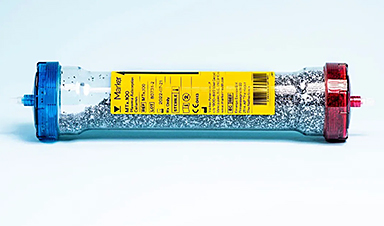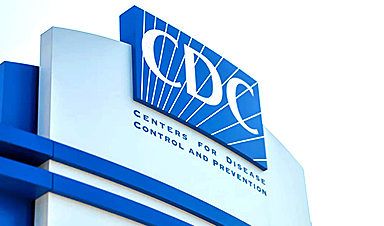
How doctors can predict which patients are more likely to die of COVID Several studies have come out about the COVID prognosis.
As a result, we now have a powerful way to predict which patients with COVID pneumonia are more likely to die and require longer stays in the hospital. We already know that less than 15% of people who get COVID have a severe disease to the point of requiring hospitalization. Less than 5% of people who get coronavirus require ICU.
For those with COVID pneumonia who require ICU, and for some of the other patients in the hospital who might not necessarily need ICU, these are the patients who have the cytokine storm that we keep hearing about, meaning the immune system is going haywire.
There is a ton of inflammation taking place in the body….especially the lungs. But now, we have a more specific way of predicting who is more likely to develop cytokine storm, and therefore more likely to die, and who is more likely to require a longer stay in the hospital….and it’s based on the bloodwork we get when patients are hospitalized.
When we get bloodwork, we’re doing various lab tests. It is most commonly a complete blood count, CBC, and a complete metabolic panel or CMP. We often check other things like troponin, d-dimer, LDH, ferritin, and CRP. A complete blood count is specifically looking at 3 things: hemoglobin levels, platelets, and white blood cells. We can use the total number and the breakdown of the percentages of the types of white blood cells, meaning what percentage are neutrophils, monocytes, lymphocytes, eosinophils, and basophils. Lymphocytes generally make up about 15-45% of WBC. This is very important as it pertains to COVID, and you’ll see why in a little bit.
The CMP stands for the complete metabolic pan looking at sodium, potassium, chloride, bicarbonate, blood urea nitrogen, creatinine, glucose calcium, bilirubin, albumin, and liver enzymes like AST ALT alkaline phosphatase. Some of these also have important implications when it comes to COVID disease severity. Because In the recent study done at Temple University, they analyzed over 500 hospitalized COVID patients, all of which had inflammation in their lungs seen on a CT scan of the chest (show). They determined the criteria for COVID cytokine storm. For patients who met these criteria, their length of stay in the hospital was 15 days, compared to 6 days if they did not meet the criteria.
Mortality was 28.8% in the group that met the criteria, vs. 6.6% in those who did not. So if they met cytokine storm criteria, their likelihood of dying was 4 times higher. And how accurate was this prediction model? Pretty accurate, as this study had a specificity of 79% and a sensitivity of 85%, which is a lot of predictive power. Most of the patients who met the criteria for CS did so at the time of admission or shortly after. This suggests that there is an early and rapid progression in these patients and that there is a low likelihood of developing cytokine storms after 10 days of hospitalization.
So based on these specific lab parameters, this is how doctors can predict which patients are more likely to die of COVID. I find that this study correlates with what I’ve seen in my personal experience with hospitalized covid patients. And yes, the man whose CT scan I showed you earlier in this video met all of these criteria for cytokine storm, and he did so as soon as 24 hours of being admitted to the hospital.
Doctor Mike Hansen, MD Internal Medicine | Pulmonary Disease | Critical Care Medicine
News
Measles Is Back: Doctors Warn of Dangerous Surge Across the U.S.
Parents are encouraged to contact their pediatrician if their child has been exposed to measles or is showing symptoms. Pediatric infectious disease experts are emphasizing the critical importance of measles vaccination, as the highly [...]
AI at the Speed of Light: How Silicon Photonics Are Reinventing Hardware
A cutting-edge AI acceleration platform powered by light rather than electricity could revolutionize how AI is trained and deployed. Using photonic integrated circuits made from advanced III-V semiconductors, researchers have developed a system that vastly [...]
A Grain of Brain, 523 Million Synapses, Most Complicated Neuroscience Experiment Ever Attempted
A team of over 150 scientists has achieved what once seemed impossible: a complete wiring and activity map of a tiny section of a mammalian brain. This feat, part of the MICrONS Project, rivals [...]
The Secret “Radar” Bacteria Use To Outsmart Their Enemies
A chemical radar allows bacteria to sense and eliminate predators. Investigating how microorganisms communicate deepens our understanding of the complex ecological interactions that shape our environment is an area of key focus for the [...]
Psychologists explore ethical issues associated with human-AI relationships
It's becoming increasingly commonplace for people to develop intimate, long-term relationships with artificial intelligence (AI) technologies. At their extreme, people have "married" their AI companions in non-legally binding ceremonies, and at least two people [...]
When You Lose Weight, Where Does It Actually Go?
Most health professionals lack a clear understanding of how body fat is lost, often subscribing to misconceptions like fat converting to energy or muscle. The truth is, fat is actually broken down into carbon [...]
How Everyday Plastics Quietly Turn Into DNA-Damaging Nanoparticles
The same unique structure that makes plastic so versatile also makes it susceptible to breaking down into harmful micro- and nanoscale particles. The world is saturated with trillions of microscopic and nanoscopic plastic particles, some smaller [...]
AI Outperforms Physicians in Real-World Urgent Care Decisions, Study Finds
The study, conducted at the virtual urgent care clinic Cedars-Sinai Connect in LA, compared recommendations given in about 500 visits of adult patients with relatively common symptoms – respiratory, urinary, eye, vaginal and dental. [...]
Challenging the Big Bang: A Multi-Singularity Origin for the Universe
In a study published in the journal Classical and Quantum Gravity, Dr. Richard Lieu, a physics professor at The University of Alabama in Huntsville (UAH), which is a part of The University of Alabama System, suggests that [...]
New drug restores vision by regenerating retinal nerves
Vision is one of the most crucial human senses, yet over 300 million people worldwide are at risk of vision loss due to various retinal diseases. While recent advancements in retinal disease treatments have [...]
Shingles vaccine cuts dementia risk by 20%, new study shows
A shingles shot may do more than prevent rash — it could help shield the aging brain from dementia, according to a landmark study using real-world data from the UK. A routine vaccine could [...]
AI Predicts Sudden Cardiac Arrest Days Before It Strikes
AI can now predict deadly heart arrhythmias up to two weeks in advance, potentially transforming cardiac care. Artificial intelligence could play a key role in preventing many cases of sudden cardiac death, according to [...]
NanoApps Medical is a Top 20 Feedspot Nanotech Blog
There is an ocean of Nanotechnology news published every day. Feedspot saves us a lot of time and we recommend it. We have been using it since 2018. Feedspot is a freemium online RSS [...]
This Startup Says It Can Clean Your Blood of Microplastics
This is a non-exhaustive list of places microplastics have been found: Mount Everest, the Mariana Trench, Antarctic snow, clouds, plankton, turtles, whales, cattle, birds, tap water, beer, salt, human placentas, semen, breast milk, feces, testicles, [...]
New Blood Test Detects Alzheimer’s and Tracks Its Progression With 92% Accuracy
The new test could help identify which patients are most likely to benefit from new Alzheimer’s drugs. A newly developed blood test for Alzheimer’s disease not only helps confirm the presence of the condition but also [...]
The CDC buried a measles forecast that stressed the need for vaccinations
This story was originally published on ProPublica, a nonprofit newsroom that investigates abuses of power. Sign up to receive our biggest stories as soon as they’re published. ProPublica — Leaders at the Centers for Disease Control and Prevention [...]





















